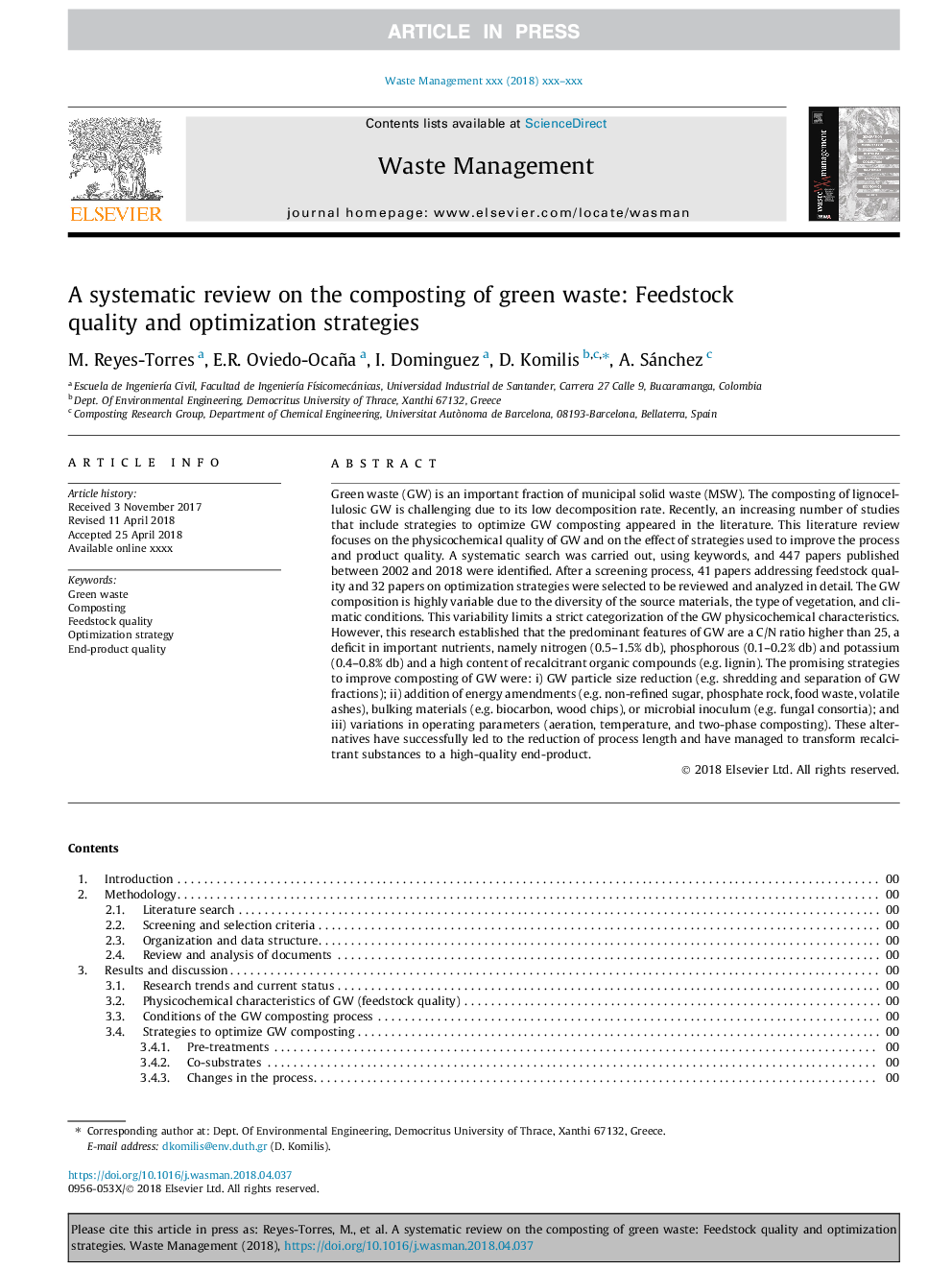| کد مقاله | کد نشریه | سال انتشار | مقاله انگلیسی | نسخه تمام متن |
|---|---|---|---|---|
| 8869594 | 1622609 | 2018 | 14 صفحه PDF | دانلود رایگان |
عنوان انگلیسی مقاله ISI
A systematic review on the composting of green waste: Feedstock quality and optimization strategies
ترجمه فارسی عنوان
بررسی سیستماتیک در مورد کمپوست زباله های سبز: کیفیت مواد اولیه و استراتژی های بهینه سازی
دانلود مقاله + سفارش ترجمه
دانلود مقاله ISI انگلیسی
رایگان برای ایرانیان
کلمات کلیدی
زباله سبز، کمپوست، کیفیت مواد اولیه، استراتژی بهینه سازی، کیفیت محصول نهایی،
موضوعات مرتبط
مهندسی و علوم پایه
علوم زمین و سیارات
مهندسی ژئوتکنیک و زمین شناسی مهندسی
چکیده انگلیسی
Green waste (GW) is an important fraction of municipal solid waste (MSW). The composting of lignocellulosic GW is challenging due to its low decomposition rate. Recently, an increasing number of studies that include strategies to optimize GW composting appeared in the literature. This literature review focuses on the physicochemical quality of GW and on the effect of strategies used to improve the process and product quality. A systematic search was carried out, using keywords, and 447 papers published between 2002 and 2018 were identified. After a screening process, 41 papers addressing feedstock quality and 32 papers on optimization strategies were selected to be reviewed and analyzed in detail. The GW composition is highly variable due to the diversity of the source materials, the type of vegetation, and climatic conditions. This variability limits a strict categorization of the GW physicochemical characteristics. However, this research established that the predominant features of GW are a C/N ratio higher than 25, a deficit in important nutrients, namely nitrogen (0.5-1.5% db), phosphorous (0.1-0.2% db) and potassium (0.4-0.8% db) and a high content of recalcitrant organic compounds (e.g. lignin). The promising strategies to improve composting of GW were: i) GW particle size reduction (e.g. shredding and separation of GW fractions); ii) addition of energy amendments (e.g. non-refined sugar, phosphate rock, food waste, volatile ashes), bulking materials (e.g. biocarbon, wood chips), or microbial inoculum (e.g. fungal consortia); and iii) variations in operating parameters (aeration, temperature, and two-phase composting). These alternatives have successfully led to the reduction of process length and have managed to transform recalcitrant substances to a high-quality end-product.
ناشر
Database: Elsevier - ScienceDirect (ساینس دایرکت)
Journal: Waste Management - Volume 77, July 2018, Pages 486-499
Journal: Waste Management - Volume 77, July 2018, Pages 486-499
نویسندگان
M. Reyes-Torres, E.R. Oviedo-Ocaña, I. Dominguez, D. Komilis, A. Sánchez,
